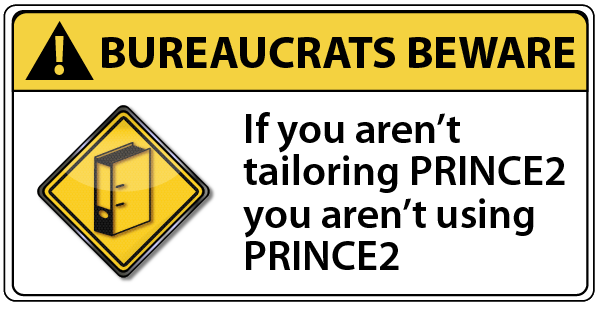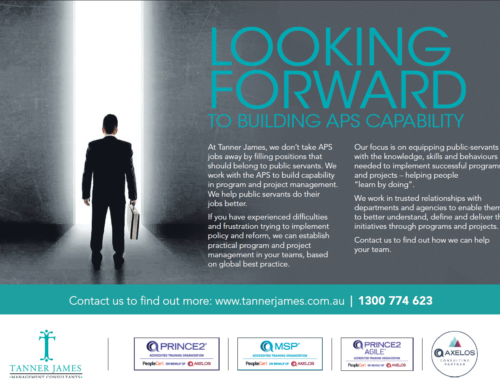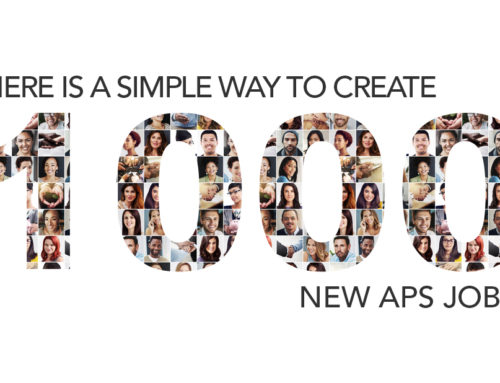Last month I wrote about the PRINCE2® 2017 update, in terms of how simplicity and agility replaces complexity and bureaucracy. This month I would like to look at one critical feature of the PRINCE2 2017 update – tailoring.
By way of introduction I would like to see if the following scenario resonates with any of you working in Canberra departments and agencies…
You attend a PRINCE2 training course. The method seems great. You return to your workplace newly enthused with a real clarity about what you need to do to make your project a success. Being a good corporate citizen, you contact your central PMO and have a look at the project management framework you are required to use. You have been told it is based on PRINCE2, but the more you look into it the more your heart sinks:
- It is almost entirely document (template driven);
- The PRINCE2 Principles and Themes have been lost;
- There are additional imposts drawn from all manner of sources;
- Terminology has been changed all over the place for no apparent reason.
In short, you find yourself entangled in an elaborate bureaucracy. All thoughts of PRINCE2 being flexible, helping you structure things and unleash your creativity are lost.
How did this happen?
“If the organization does not consider tailoring, it is not using PRINCE2”
This is a direct quote from the PRINCE2 2017 manual. It is difficult to overstate the significance of what at first sight might seem like a simple statement.
Let’s revisit the “elaborate bureaucracy” scenario in the light of this statement.
How did your department or agency go about tailoring PRINCE2? What were the drivers and objectives for doing so? Who was involved? Did they have the right skills and experience? What projects types were considered? Does the framework take account of different delivery approaches, including agile?
Creating a framework is one thing. Deploying it successfully so that all projects are using it consistently and effectively is another. What has your department or agency done to encourage widespread use of the framework? Do all those involved in projects have the support they need?
Tailoring is not just about creating a central framework. Each project manager must then consider what tailoring needs to be done in order to suit the project. In my experience this is often where problems arise – once a centrally defined framework has been created they are not explicit about how the framework can be tailored to suit each project. Project Managers feel their hands are tied, because if they do not use “all the templates” then the PMO will be on their back. And so they resign themselves to operating in an elaborate bureaucracy.
What is tailoring?
Tailoring means adapting a method or process to suit the situation in which it will be used.
PRINCE2 is tailored to suit the project environment, size, complexity, importance, team capability and risk.
Tailoring can be applied to processes, themes, roles, management products and terminology.
The 2017 update features extensive guidance on tailoring, organisational adoption and application in practice. It explains exactly how the method can be used for agile projects, simple projects, projects in a programme, and projects involving commercial suppliers.
But the bottom-line is this: if you are not tailoring, you are not using PRINCE2.
Want to know more about tailoring PRINCE2?
If you would like to hear about the update and tailoring personally, please call me personally on 0407 404 688 or email me at john.howarth@tannerjames.com.au. I would be very happy to come to meet you, answer questions and provide further information.
What do you think?
Please feel free to comment on the blog itself or via LinkedIn.






Leave A Comment